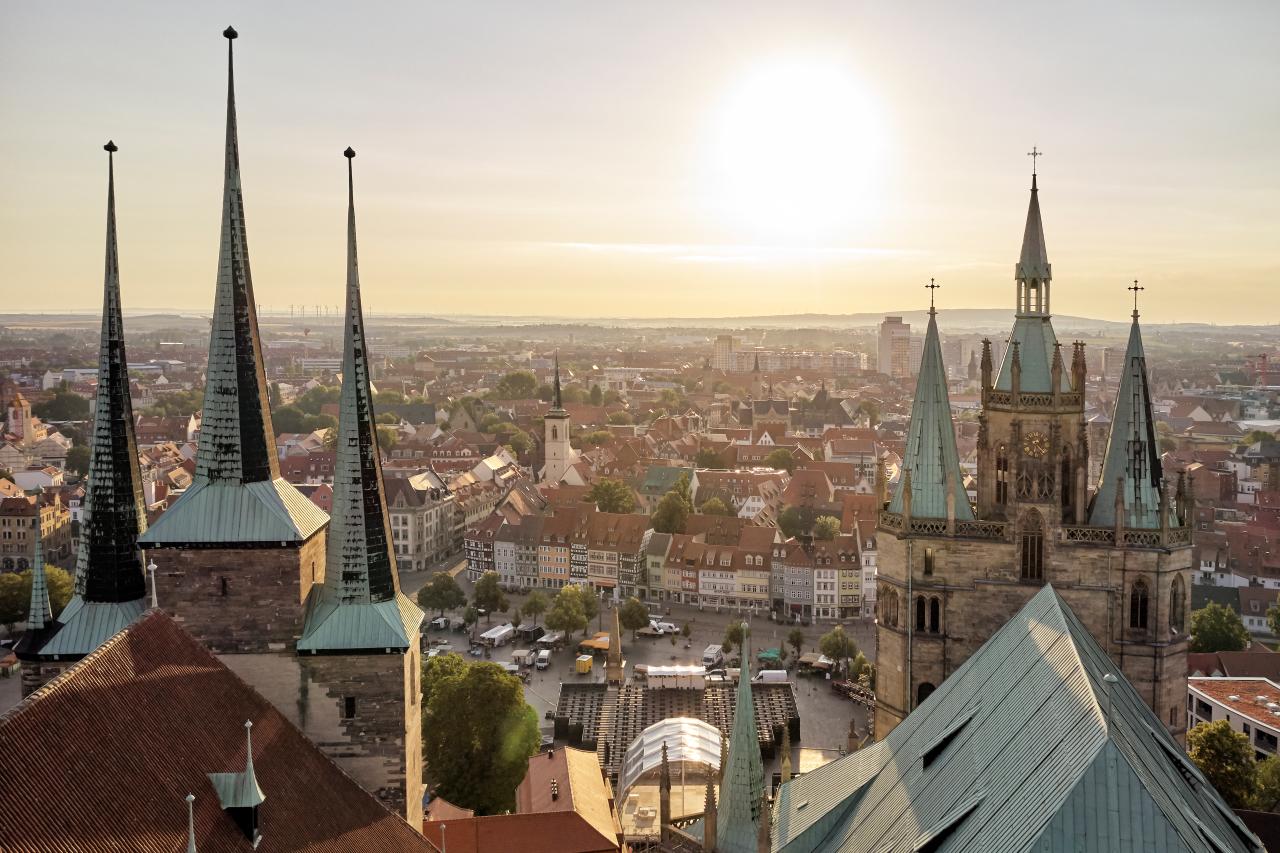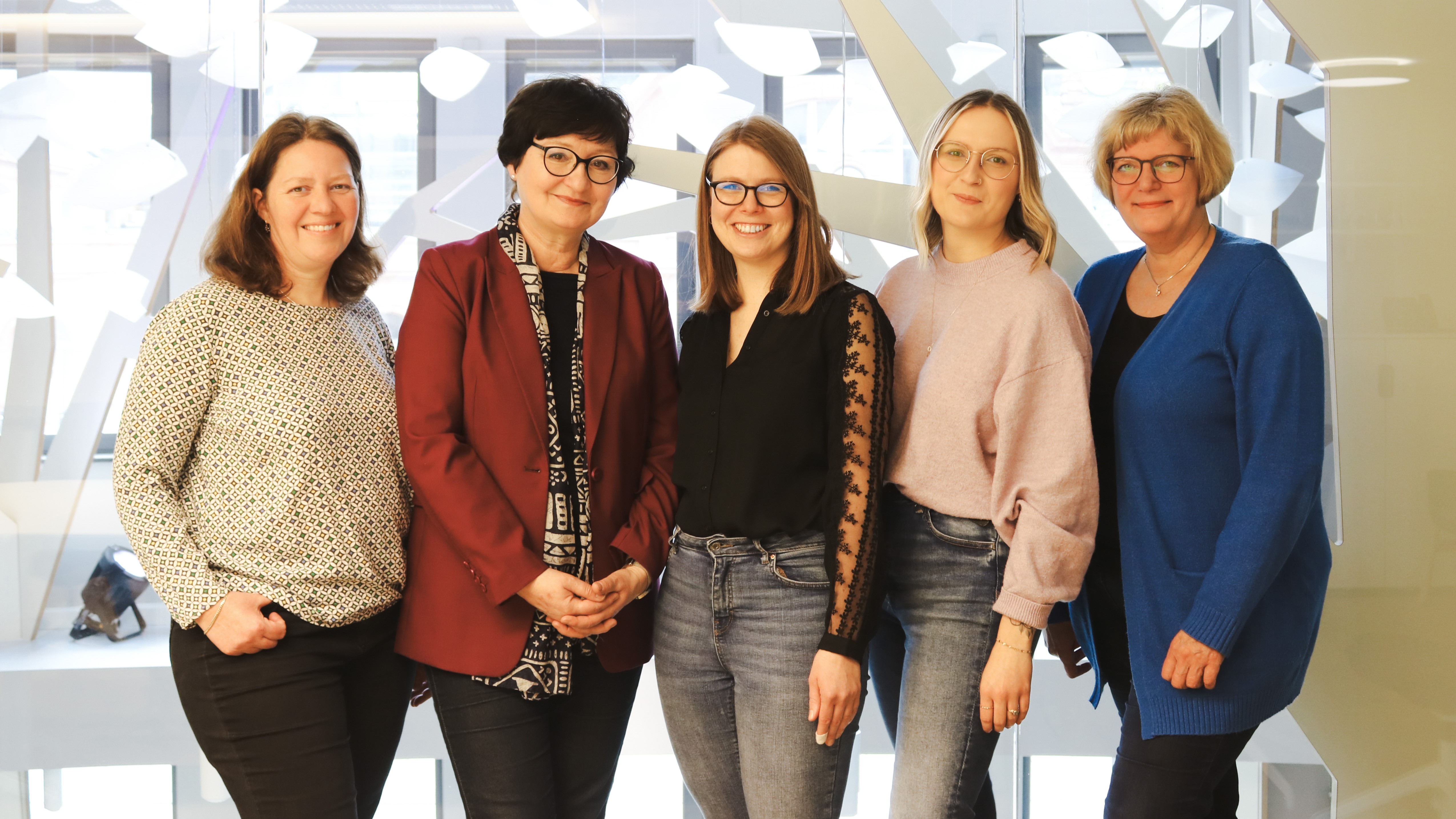Find the appropriate contacts for all issues associated with foreign markets' marketing and other b2b objectives. Right here!
Peasants’ War Museum in the Corn Market Church
The eventful life of a church
In 1525, the Corn Market Church gained a significance that had nothing to do with its actual purpose – it was used by the peasants, craftsmen and citizens of the region as a meeting place before the battle against the soldiers of the princely authorities in Bad Frankenhausen. It is said that church bells were melted down inside the building to forge cannons. The uprising came to a dramatic and devastating end for the peasants and their supporters. Could there be a more appropriate place for the Peasants’ War Museum than one of the original scenes of the war?
Simple style, powerful idealism
The Corn Market Church was originally built in the first half of the 13th century as part of the Franciscan monastery that was established there at that time. Following the philosophy of their order, there were strict requirements regarding the simplicity of the construction. After the Reformation, the monastery was demolished. Only the church, which is now used for secular purposes, the small monastery garden and the lapidarium still remind us of this era – as well as the Barfüsserstrasse (bare-footed road) that leads to the building: the monks of this order generally did not wear shoes …
See the rainbow in me
After its secularisation at the beginning of the 19th century, the building was heavily used for a period of 170 years – as the site of the city’s scales and as a granary to begin with; later, the interior was completely remodelled architecturally to incorporate flats and offices. In the 1970s, after extensive renovations, the Corn Market Church was given a new purpose as a conference, concert and exhibition venue – which protected it from demolition. Implementing this project required a lot of work and an extensive budget. Ever since the extensive reconstruction, an artistically designed window element gleams above the area where the altar usually goes. When you look more closely, you will see that the window shows a colourful rainbow. The radical Reformer Thomas Müntzer, who worked as a preacher at St. Mary’s Church in Mühlhausen, chose this “celestial sign” as a symbol of the connection between God and man – in this context, it later became a symbol of the German Peasants’ War.
Peasants’ War Museum – a visit with a profound impact
The church window provides a harmonious backdrop for the permanent exhibition “Luther’s Unloved Brothers”. The museum’s treatment of the German Peasants’ War of 1525 begins with the causes of the uprising, covers aggravating factors such as the popular media at the beginning of the early modern period, which took the form of pamphlets, and extends to the major battle that the peasants lost in Bad Frankenhausen and the serious consequences. A large diorama shows what the battlefield might have looked like and at the same time produces an oppressive feeling – only around a quarter of the rebels survived and Thomas Müntzer was executed. A wide variety of exhibits, including a replica of a printing press, books, busts, engravings, weapons and Christian artefacts destroyed by iconoclasts, make up the majority of the exhibition. There are also visual representations that illustrate the full scale of the events. Informative texts and an interactive film station about monastery gardens and the Franciscan garden culture impart basic knowledge or expand upon this.
Sustainable history
The peasant revolts of 1524 to 1526 in some countries caused the entire social hierarchy and the associated allocation of rights and privileges to falter dramatically for the first time. The rebels were punished severely, but the fear of further revolutionary endeavours caused the ruling classes to develop a new awareness – with varying impacts. A visit is sure to give you inspiration for follow-up deliberations and discussions, as our lives today are closely affected by this topic.
Around Mühlhausen’s Kornmarkt
Your mind can be loosened up again with a visit to the public house “Brauhaus Zum Löwen”, which is opposite the Corn Market Church. The building looks back upon a 300-year history. The brewery offers a range of its own beers – you will like them. The direct view of the church from the beer garden on Kornmarkt is wonderful.
In the State Exhibition, the progressive phases of the German Peasants’ War will be shown from a transregional perspective. The Peasants’ War Museum in the Corn Market Church is part of the Thuringian State Exhibition 2025 – and one of the four succinct stops in the medieval Imperial City of Mühlhausen. At this museum, the second stop, you will learn exciting and surprising information about the events of the time - their origins, escalation and consequences - and about well-known protagonists as well as key figures who have been given less attention by history.
Under the heading "freiheyt 1525. 500 years of the Peasants' War", Thuringia 2025 commemorates the events of the German Peasants' War in Thuringia in 1525. The center of the exhibition is the historic town of Mühlhausen with its museums and Müntzer memorials. This will be complemented by exhibitions in the Panorama Museum Bad Frankenhausen, which is located directly on the old "Schlachtenberg". Information is already available at bauernkrieg2025.de and in our B2B portal.
Header: ©Tino Sieland, Wirtschaftsbetriebe Mühlhausen GmbH/ Geschäftsführer Martin Fromm
Graphic in the website block: Sebastian Köpcke, Mühlhäuser Museen
Information for Guests
Bath Facilitys
Information of the Museum
Information of Architecture
In the mountain
Treatments and indications
Mobility Offers
Sauna facilitys
Ensemble
Offers and service
Area
Congress facilitys
Distances
Verkehr









